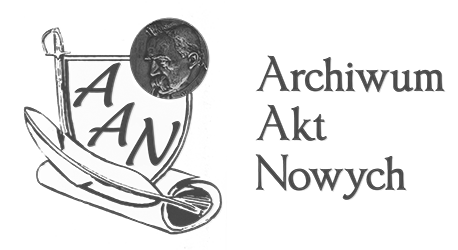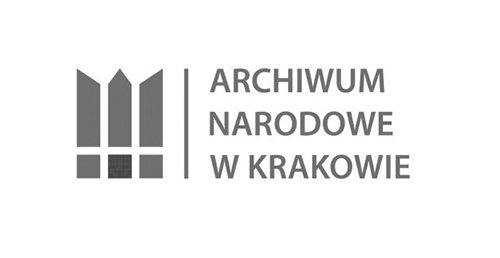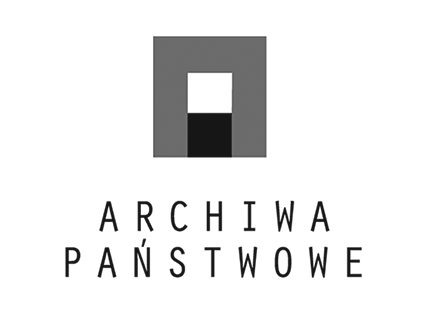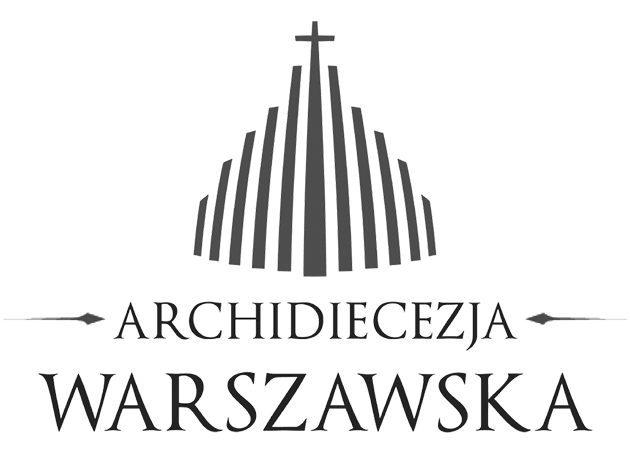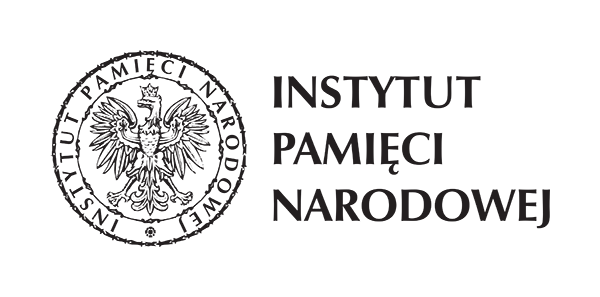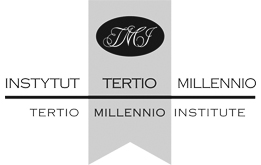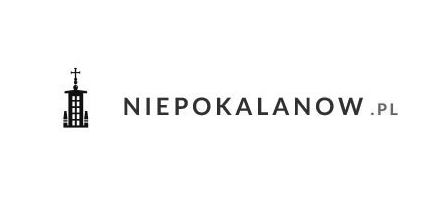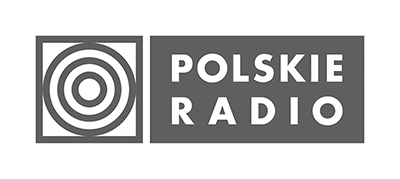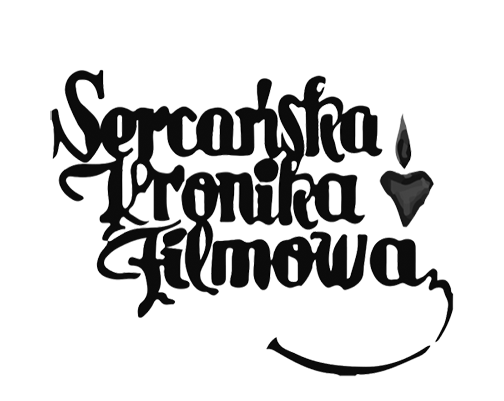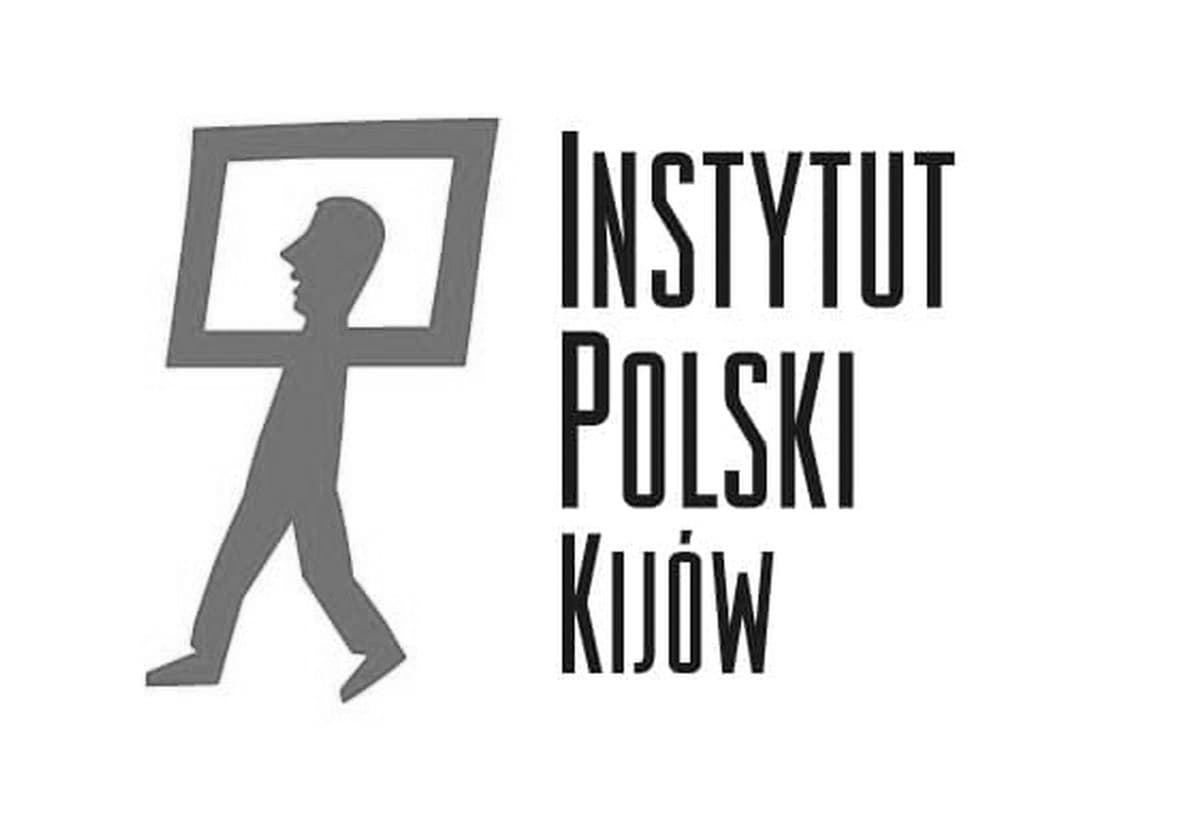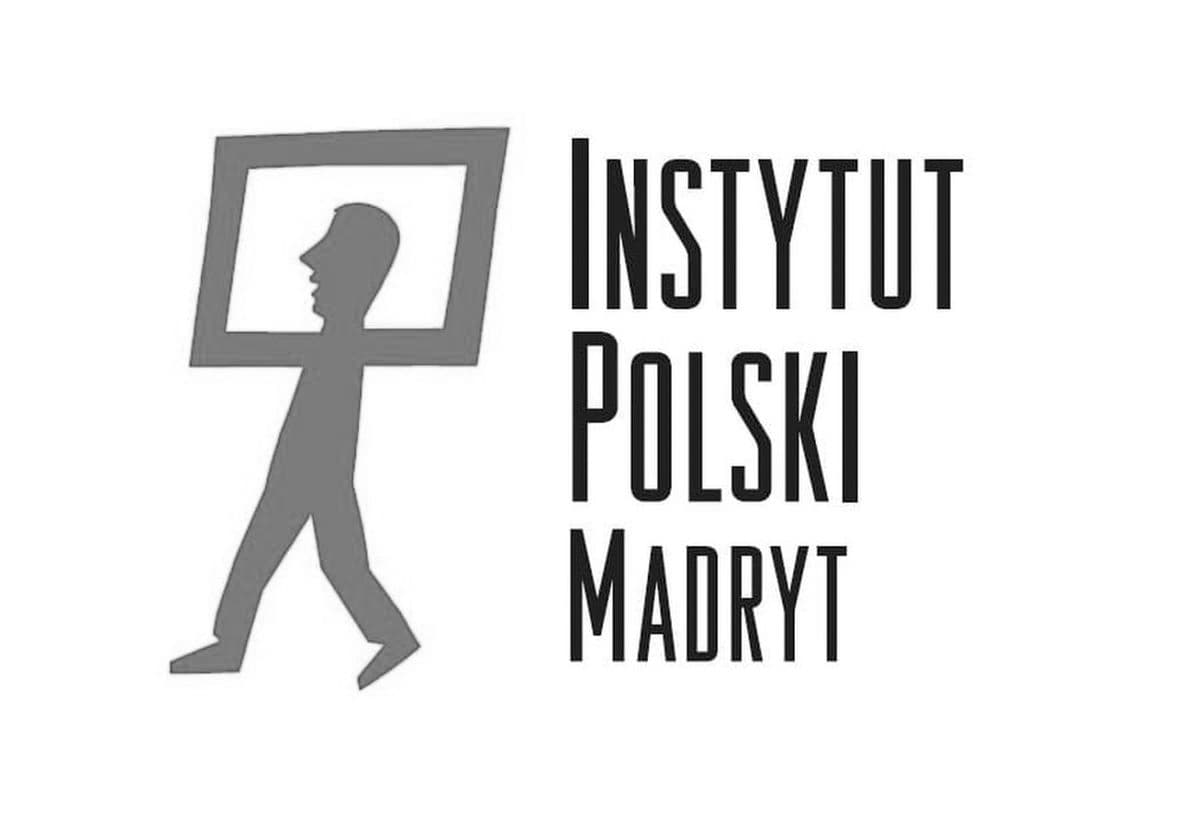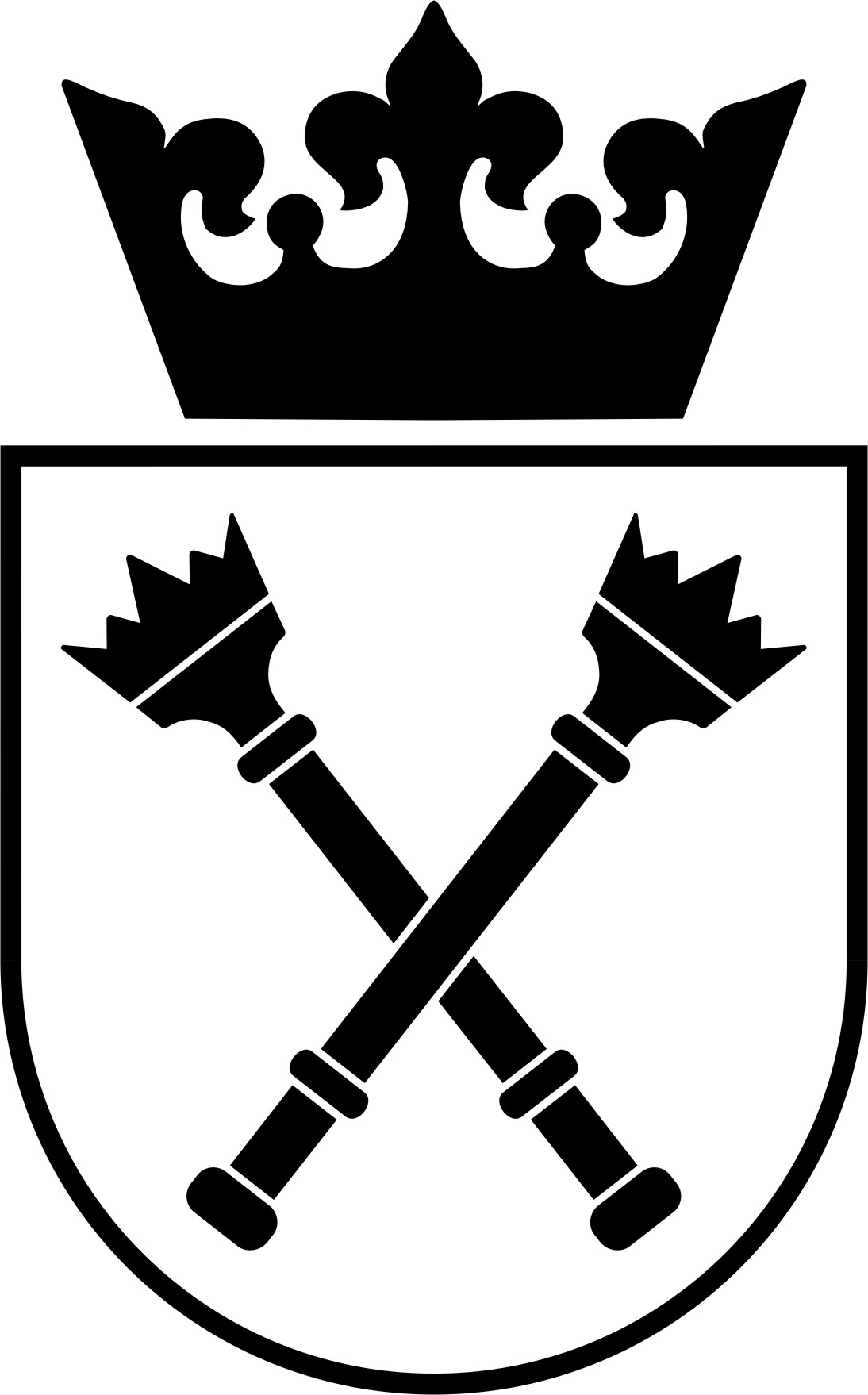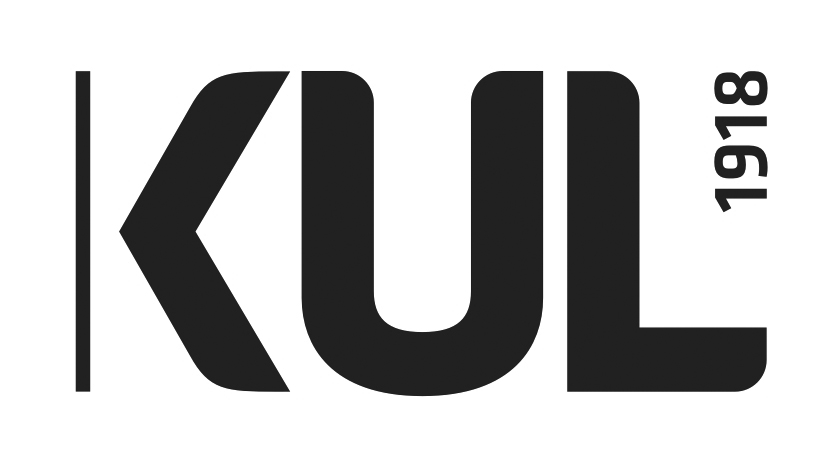Assassination attempt on John Paul II. What happened on 13 May 1981?
13 May 1981, Wednesday. Nothing special was expected in Vatican on that the day. All that was to remain after that day was the speech of John Paul II at the general audience. However, there was no speech. The day was recorded in history because of the assassination attempt that shocked the world and which remains one of the greatest mysteries of the 20th century.
Browning HP CAL calibre 9 mm - the gun used by Ağca to shoot the Pope.
Drag timeline
8.00 am
Mehmet Ali Ağca leaves the Isa guesthouse in Rome where he spent his last nights. By the afternoon he was hanging around the city, and it was never possible to say with certainty what he was doing at the time.
13.00-15.00
According to some testimonies, later withdrawn, Ağca was then having breakfast with accomplices to the crime: Oral Celik, Teodor Ayvazov and Sergei Antonov. He then went with them to get their weapons and drove to the area around St. Peter's Square. At that time, John Paul II is having lunch with Jérôm Lejeun, the eminent geneticist, and Albert Michelini, politician and journalist. They discuss the abortion law in Italy and the upcoming referendum on the issue.
4.40 pm
Ağca at St Peter's Square looks for the right place to take his shots.
5.00 pm
The general audience begins. John Paul II enters St Peter's Square, circles it once and starts the second ring.
Around 5.20 pm
Ağca shoots at the Pope. According to various accounts, the time was 5.17 pm, 5.19 pm or even slightly later. The car with the Pope leaves the square in front of the Vatican office of the Directorate of Medical Services. There he is taken to an ambulance and at around 5.30 pm rushed to the Gemelli polyclinic. At this time the bomber is apprehended by the police with the help of Sister Letizia Giudici and taken to the police station.
5.50-11.35 pm
The surgery of John Paul II is continuing. The abdominal cavity had to be cleaned, 55 centimetres of intestines cut out, the colon sewn up in several places, and a blood transfusion was also necessary. The surgery was led by Professor Francesco Crucitti and completed by Professor Giancarlo Castiglioni. All went well. At that time, crowds at St. Peter's Square prayed in anticipation of the news. The first interrogations of the perpetrator were also underway.
An ordinary Wednesday
On that day, John Paul II had lunch with Jérôm Lejeun, the eminent geneticist, and Albert Michelini, politician and journalist. Italy was then excited by the referendum on the abortion law, which was due to take place on Sunday. Abortion had been widely available there since 1978, and in the referendum Italians were to decide whether they accepted this or expected the state to provide greater protection for life. For the evening, the Communist Party announced a demonstration by abortion supporters. The Pope and his companions debated possible scenarios of events and chances for a change.
At 5pm, as he does every Wednesday, the Pope began his audience by driving around St. Peter's Square. He entered with a white Fiat Campagnola through a side gate on the left-hand side of the square, next to the Swiss Guard post. He was driven in an open car through a corridor fenced off by barriers, however, coming into direct contact with the pilgrims. After making two circles around the square, the Holy Father always used to sit down on the papal throne and delivered a speech.
On Friday, 15 May, the encyclical "Laborem exercens", dedicated to human labour, was to be promulgated. The encyclical outlines the Catholic social teaching, opposing both socialist and liberal views on the subject. The planned date of promulgation of the document was not accidental - 15 May marked the 90th anniversary of the publication of the most important social encyclical of the Catholic Church - "Rerum novarum" by Leo XIII. It was to it that John Paul II wished to dedicate his Wednesday audience. “The Church (...) condemns everything that offends man in his dignity as the 'image of God' and in his fundamental, universal, inviolable and inalienable rights, everything that hinders growth according to the God's intention” - these words would resound in St. Peter's Square. around 5.30 pm if things had gone on as usual.
Of the more than 20,000 pilgrims gathered in front of the Basilica that day, three women and one little girl made history. On the right-hand side of the courtyard, two American women were waiting for the Pope: 21-year-old Rose Hall and 58-year-old Anne Odre. Standing close together, they both climbed onto chairs to take the Pope's photo. Sister Letizia Giuduci, a Franciscan, stood nearby. The day was hot and sunny and Sister Letizia fell into a lethargy from which she was only awakened by the sound of bells. It was the first time she had attended the audience and she was disappointed - everything could be better seen on TV. A man blocked her view. The Pope lifted in his arms a little girl, Sara Bartoli, who in this way unwittingly delayed the assassination attempt. A few tens of seconds later, Sister Letizia heard gunshots and started screaming: "Long live the Pope!" Only after a moment did she realise that it was not fireworks, and that the man in front of her had in his hand not - like everyone else - a camera, but a gun.
On Friday, 15 May, the encyclical "Laborem exercens", dedicated to human labour, was to be promulgated. The encyclical outlines the Catholic social teaching, opposing both socialist and liberal views on the subject. The planned date of promulgation of the document was not accidental - 15 May marked the 90th anniversary of the publication of the most important social encyclical of the Catholic Church - "Rerum novarum" by Leo XIII. It was to it that John Paul II wished to dedicate his Wednesday audience. “The Church (...) condemns everything that offends man in his dignity as the 'image of God' and in his fundamental, universal, inviolable and inalienable rights, everything that hinders growth according to the God's intention” - these words would resound in St. Peter's Square. around 5.30 pm if things had gone on as usual.
Of the more than 20,000 pilgrims gathered in front of the Basilica that day, three women and one little girl made history. On the right-hand side of the courtyard, two American women were waiting for the Pope: 21-year-old Rose Hall and 58-year-old Anne Odre. Standing close together, they both climbed onto chairs to take the Pope's photo. Sister Letizia Giuduci, a Franciscan, stood nearby. The day was hot and sunny and Sister Letizia fell into a lethargy from which she was only awakened by the sound of bells. It was the first time she had attended the audience and she was disappointed - everything could be better seen on TV. A man blocked her view. The Pope lifted in his arms a little girl, Sara Bartoli, who in this way unwittingly delayed the assassination attempt. A few tens of seconds later, Sister Letizia heard gunshots and started screaming: "Long live the Pope!" Only after a moment did she realise that it was not fireworks, and that the man in front of her had in his hand not - like everyone else - a camera, but a gun.
12 hours of Ağca
The shooter was Mehmet Ali Ağca, a 23-year-old professional assassin from Turkey, an escapee from the prison where he was incarcerated for the murder of a Turkish journalist, trained in the Middle East, with links to the mafia, the Grey Wolves terrorist organisation and possibly to Turkish intelligence. Called a man of a hundred truths because he repeatedly changed his version of the events surrounding the assassination attempt on John Paul II. 12 hours of his life between dawn and 5pm on Wednesday 13 May 1981 perhaps hold the key to the mystery - who ordered Ağca to kill the Pope.
The would-be assassin of John Paul II stayed in the Isa Pension at 35, Via Cicerone, a quarter of an hour's walk from St. Peter's Square. As he recalls, he did not sleep well that night, lying in bed until 5. After morning gymnastics, a quick shower and a prayer, he left the room around 8 and had never returned there. There he left his Turkish passport, his University of Perugia Aliens card and his Italian residence permit - all for the name of Faruk Ozgun. According to Ağca's first testimony and his contemporary memories, the time leading up to the assassination attempt was filled with solitary walks around the city - the Colosseum, Campo de' Fiori, Venice Square - and visits to bars. According to his second version - presented in numerous and exhaustive testimonies during the 1982 investigation - he spent that time with accomplices to the crime.
The would-be assassin of John Paul II stayed in the Isa Pension at 35, Via Cicerone, a quarter of an hour's walk from St. Peter's Square. As he recalls, he did not sleep well that night, lying in bed until 5. After morning gymnastics, a quick shower and a prayer, he left the room around 8 and had never returned there. There he left his Turkish passport, his University of Perugia Aliens card and his Italian residence permit - all for the name of Faruk Ozgun. According to Ağca's first testimony and his contemporary memories, the time leading up to the assassination attempt was filled with solitary walks around the city - the Colosseum, Campo de' Fiori, Venice Square - and visits to bars. According to his second version - presented in numerous and exhaustive testimonies during the 1982 investigation - he spent that time with accomplices to the crime.
Breakfast with Bulgarians
According to the testimony that Ağca began to submit on 28 October 1982, he was assisted in carrying out the attack by a Turk, Oral Celik, whom he had known before his time in a Turkish prison, and two Bulgarians, Teodor Ayvazov, the cashier of the Bulgarian embassy in Rome, and Sergei Antonov, an employee of Balkan Airlines and a secret collaborator with the Bulgarian civilian intelligence service. Ağca knew the Bulgarians only under nicknames.
The bomber's testimony changed as the days passed. He provided the fullest version of the events at the end of December 1982. According to it, all four men met at 1 p.m. at the Republic Square and had breakfast together. They then went to Via Nomentana, where Antonov left the others for 15 minutes and returned with two suitcases containing pistols and two bang bombs. Around 3 pm they reached Via della Conciliazione leading to St. Peter's Square. After drinking his coffee, Aivazov left. Antonov stayed in the car while Ağca and Celik headed towards the Vatican.
The plan was simple: after killing the Pope by Ağca, Celik was to detonate the bang bombs. The panic caused by the explosions was to allow the two accomplices to escape to the car. Antonov was waiting for them at an agreed place and was to take them to a truck loaded with goods and ready to leave Italy.
Ağca revoked these testimonies during the trial and the court failed to prove their veracity. However, the alibis given by Antonov and Aivazov for that day were recognised as unreliable by the court. There is a dispute among historians as to whether the testimonies pointing to the Bulgarian trail were sincere or whether this was one of many attempts to mislead the judiciary. Many historians assume that people who had visited the bomber in prison included representatives of the USA and Bulgaria, who influenced the content of his testimony.
The bomber's testimony changed as the days passed. He provided the fullest version of the events at the end of December 1982. According to it, all four men met at 1 p.m. at the Republic Square and had breakfast together. They then went to Via Nomentana, where Antonov left the others for 15 minutes and returned with two suitcases containing pistols and two bang bombs. Around 3 pm they reached Via della Conciliazione leading to St. Peter's Square. After drinking his coffee, Aivazov left. Antonov stayed in the car while Ağca and Celik headed towards the Vatican.
The plan was simple: after killing the Pope by Ağca, Celik was to detonate the bang bombs. The panic caused by the explosions was to allow the two accomplices to escape to the car. Antonov was waiting for them at an agreed place and was to take them to a truck loaded with goods and ready to leave Italy.
Ağca revoked these testimonies during the trial and the court failed to prove their veracity. However, the alibis given by Antonov and Aivazov for that day were recognised as unreliable by the court. There is a dispute among historians as to whether the testimonies pointing to the Bulgarian trail were sincere or whether this was one of many attempts to mislead the judiciary. Many historians assume that people who had visited the bomber in prison included representatives of the USA and Bulgaria, who influenced the content of his testimony.
Assassination attempt
Ağca - alone or with Celik - went to St Peter's Square pretending to be a tourist. He entered the Vatican with the crowd. About 4.40 pm he asked the Benedictine father, Martin Siciliani in English about the direction from which the Pope would come. "From the Muskegon Gate" - he heard. He took his place at the height of the right colonnade. John Paul II circled the square twice. It was not until the second round that the bomber chose the exact place and moment. He aimed at the head, but seeing the girl in the Pope's arms, he delayed the shot. It was 5.17 or 5.19 pm, maybe a few minutes later, he fired a Browning calibre 9 mm, from a distance of a few metres. He saw the Pope from the waist up. He aimed at the chest.
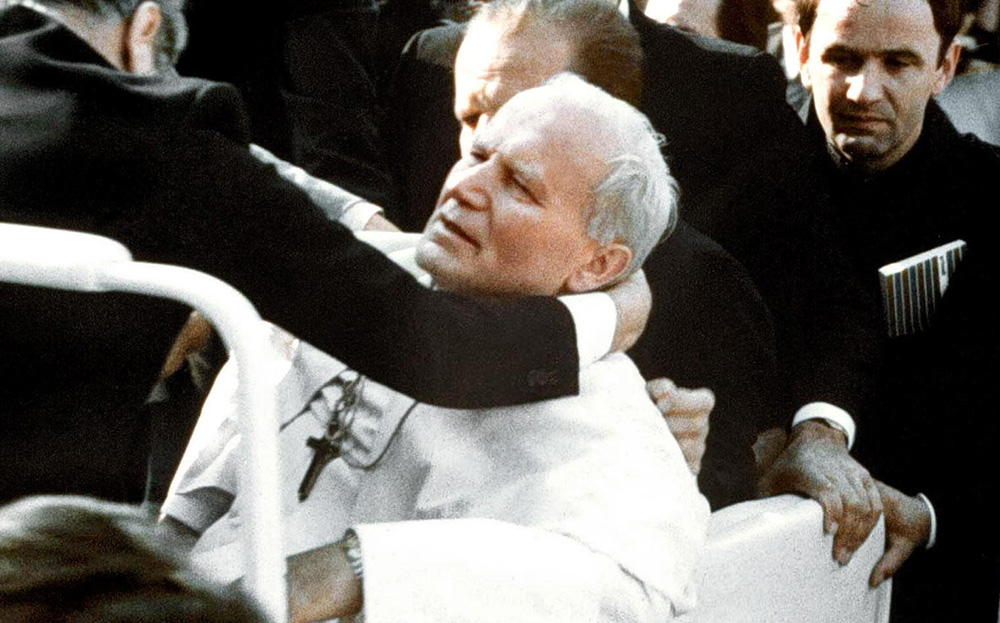
Italian officers found one shell casing and one bullet after the incident and were trying to establish the trajectories of the bullets on this basis. There were supposed to be two bullets - one was to pierce through the body of John Paul II and hit Anne Odre, the other was to hook the Pope's finger and elbow and wound Rose Hall in the elbow. Even then, many experts doubted whether such a flight of bullets was possible and whether one of the shots injuring the women had not been aimed from the opposite direction. Doubts grew when it emerged that the bullet that had pierced the Holy Father had fallen to the floor of the car. Many witnesses recall only two gunshots, but many heard three or even four. Was it Ağca who fired three times? Or did anyone else shoot? If it was Celik, why didn't he detonate the bang bombs after the incident? And why is there no testimony about the other perpetrator? So far, no one has given a satisfactory answer to these questions.
Broken down ambulance
As the wounded John Paul II slumped into the arms of his secretary, Priest Stanislaw Dziwisz, a member of the Swiss Guard protecting the pope, Alois Estermann, shielded him with his own body against potential further shots. The Pope was conscious, answered Dziwisz's questions, prayed. Instant decisions were taken, John Paul II was losing his blood and every minute was worth its weight in gold. At St Peter's Square, seven doctors, paramedics and nurses and two ambulances with the staff were on duty during the audience. The doctors did not get into the car. Angelo Gugel, the papal butler, started to disperse people. The car moved towards the Bell Gate. The papamobile glided along Via delle Fondamenta, circling the Basilica, through a tunnel into the Vatican's Belvedere courtyard. John Paul II was laid out in front of the Vatican office of the Directorate of Medical Services. According to Arturo Mari, the Pope's photographer, Dziwisz, seeing the blood flowing, put pressure on the wound, which may have saved his friend's life. The nurse, Leonardo Porzia dressed the wound. The Pope's personal physician, Renato Buzzonetti, who was on duty in the office, checked for feeling in his legs by bending them. A great deal of blood leaked onto the floor.
By a joint decision, Dziwisz and Buzzonetti chose the Gemelli polyclinic, over six kilometres away, where an apartment was waiting for him. John Paul II had previously established that he wanted to be treated there in case of illness. Much closer was the Holy Spirit Hospital. Anne Odre with an injured breast, pancreas and spleen and Rose Hall with a serious elbow injury were taken there. They later recalled nurses and doctors shaking cigarette dust on the floor, staff playing cards, cats in the corridor and rusty needles. Rose Hall was successfully operated on by one of the country's better specialists but Anne Odre fled Italy to have doctors in the US improve the operations carried out in Rome. The Gemelli Polyclinic was therefore a good choice.
The ambulance that was to take the Holy Father to hospital turned out to be broken down. Another one arrived - it later transpired that the sound signal in it was not working. At around 5.30 pm it set off; escorted by police and Vatican gendarmerie, it drove through the jammed streets of Rome at a record speed on the horn. There were eight people in the ambulance: a nurse administered oxygen and an IV, someone held the legs slightly elevated, Buzzonetti checked the pulse. In the ambulance, the Pope was accompanied by Gugel, the butler, Professor Enrico Fedele, the surgeon and of course Dziwisz, staying next to the pope, hearing his prayers of "Jesus, Mary, my mother" and words of forgiveness towards the perpetrator. During this time, the second Pope’s secretary, Priest John Magee, alerted the emergency team on the Pope's arrival and arranged for blood deposited especially for John Paul II at the John Paul II Hospital of Infant Jesus in Rome.
John Paul II lost consciousness in front of the hospital itself. He had been taken by lift to the tenth floor, where his apartment was located but after a brief examination and the intervention of Dziwisz, he was taken to the operating theatre. Every second counted, the gendarmes broke down the door blocking their way. Before the surgery began, Dziwisz gave his friend the sacrament of the anointing of the sick. At 5.50 pm the operating theatre doors closed. Professor Francesco Crucitti rushed into the room at a run, the assistants dressing him while he washed his hands. He travelled four kilometres in no time with the help of a sober policeman. There were thirty people in the room, most of them just in the way. Professor Crucitti had a difficult task. In order to reduce the effects of an exit wound to the sacrum and abdominal wall with severe haemorrhage into the peritoneal cavity, the abdominal cavity had to be cleaned, 55 centimetres of intestines had to be cut out, the colon had to be sewn up in several places and a blood transfusion was also necessary.
John Paul II lost over 3 litres of blood or about 60 per cent. The blood previously prepared for the Pope, according to various accounts, either failed or turned out to be just plasma. The Pope had a very rare blood type, but there was a religious nurse and a physician's assistant who had the same type and decided to donate blood. The operation lasted five and a half hours and was completed by Professor Giancarlo Castiglioni, head of the surgical clinic who arrived at the hospital from Milan especially for this purpose.
By a joint decision, Dziwisz and Buzzonetti chose the Gemelli polyclinic, over six kilometres away, where an apartment was waiting for him. John Paul II had previously established that he wanted to be treated there in case of illness. Much closer was the Holy Spirit Hospital. Anne Odre with an injured breast, pancreas and spleen and Rose Hall with a serious elbow injury were taken there. They later recalled nurses and doctors shaking cigarette dust on the floor, staff playing cards, cats in the corridor and rusty needles. Rose Hall was successfully operated on by one of the country's better specialists but Anne Odre fled Italy to have doctors in the US improve the operations carried out in Rome. The Gemelli Polyclinic was therefore a good choice.
The ambulance that was to take the Holy Father to hospital turned out to be broken down. Another one arrived - it later transpired that the sound signal in it was not working. At around 5.30 pm it set off; escorted by police and Vatican gendarmerie, it drove through the jammed streets of Rome at a record speed on the horn. There were eight people in the ambulance: a nurse administered oxygen and an IV, someone held the legs slightly elevated, Buzzonetti checked the pulse. In the ambulance, the Pope was accompanied by Gugel, the butler, Professor Enrico Fedele, the surgeon and of course Dziwisz, staying next to the pope, hearing his prayers of "Jesus, Mary, my mother" and words of forgiveness towards the perpetrator. During this time, the second Pope’s secretary, Priest John Magee, alerted the emergency team on the Pope's arrival and arranged for blood deposited especially for John Paul II at the John Paul II Hospital of Infant Jesus in Rome.
John Paul II lost consciousness in front of the hospital itself. He had been taken by lift to the tenth floor, where his apartment was located but after a brief examination and the intervention of Dziwisz, he was taken to the operating theatre. Every second counted, the gendarmes broke down the door blocking their way. Before the surgery began, Dziwisz gave his friend the sacrament of the anointing of the sick. At 5.50 pm the operating theatre doors closed. Professor Francesco Crucitti rushed into the room at a run, the assistants dressing him while he washed his hands. He travelled four kilometres in no time with the help of a sober policeman. There were thirty people in the room, most of them just in the way. Professor Crucitti had a difficult task. In order to reduce the effects of an exit wound to the sacrum and abdominal wall with severe haemorrhage into the peritoneal cavity, the abdominal cavity had to be cleaned, 55 centimetres of intestines had to be cut out, the colon had to be sewn up in several places and a blood transfusion was also necessary.
John Paul II lost over 3 litres of blood or about 60 per cent. The blood previously prepared for the Pope, according to various accounts, either failed or turned out to be just plasma. The Pope had a very rare blood type, but there was a religious nurse and a physician's assistant who had the same type and decided to donate blood. The operation lasted five and a half hours and was completed by Professor Giancarlo Castiglioni, head of the surgical clinic who arrived at the hospital from Milan especially for this purpose.
Waiting
More and more people flocked to the polyclinic, including Italy's leading politicians, the President, Socialist and Christian Democrat leaders. Also appearing was the butler, Cardinal Paolo Bertoli, responsible for announcing to the world the news of the Pope's death.
At St Peter's Square, the faithful waited in suspense for information until late in the evening. Shortly after the attack, four priests from the Vatican Secretariat of State began informing pilgrims in different languages about what had happened. A Polish Jesuit present there, Priest Kazimierz Przydatek, ran up and grabbed the microphone to speak about the attack in Polish. He took a picture of Our Lady of Częstochowa with the inscription "SOS" made of straw from pilgrims from the Wielkopolska region in Poland. He placed it on the papal throne.
The prayer of the rosary continued until 10 pm. At 6 pm the news reached the square that the Pope was alive, at 6.47 pm the first press release was issued. The surgery was completed at 11.35 pm, however, just 20 minutes earlier a hospital spokesman had announced the news that the operation had been successful. At around two o'clock the Pope was taken to the resuscitation room. When he regained consciousness, in his first words he asked Dziwisz if they had already said the evening prayer. He thought it was still Wednesday, coming to his senses.
At St Peter's Square, the faithful waited in suspense for information until late in the evening. Shortly after the attack, four priests from the Vatican Secretariat of State began informing pilgrims in different languages about what had happened. A Polish Jesuit present there, Priest Kazimierz Przydatek, ran up and grabbed the microphone to speak about the attack in Polish. He took a picture of Our Lady of Częstochowa with the inscription "SOS" made of straw from pilgrims from the Wielkopolska region in Poland. He placed it on the papal throne.
The prayer of the rosary continued until 10 pm. At 6 pm the news reached the square that the Pope was alive, at 6.47 pm the first press release was issued. The surgery was completed at 11.35 pm, however, just 20 minutes earlier a hospital spokesman had announced the news that the operation had been successful. At around two o'clock the Pope was taken to the resuscitation room. When he regained consciousness, in his first words he asked Dziwisz if they had already said the evening prayer. He thought it was still Wednesday, coming to his senses.
Jammed gun
When the wounded pope was leaving St Peter's Square, Ali Ağca also tried to escape from there. He knew he had a difficult task. His gun jammed, that is why he fired so few shots at the Pope. He could not have defended himself against the crowd and the police - but only he knew that. Sister Letizia had no idea that the weapon was already harmless, but she nevertheless ran after the terrorist. According to the July 1981 verdict against Ağca, the sister had caught him but he managed to escape, then another man grabbed his arm, but the assassin slipped away again. At the sight of an armed carabinieri he turned and discharged his weapon at the Vatican Post Office point. Only then was he immobilised by a senior police corporal, Augusto Ceccarelli, along with other officers. However, from Ali Ağca's original testimony and from his and sister Letizia's memories, it appears that it was the sister who immobilised him and she handed him over to Ceccarelli. According to her recollection, the captured terrorist was pounded with his fists by pilgrims in St. Peter's Square. Ağca recalls that he was also beaten by police officers.
Police officers took him in a van and drove him to the police station. From there he was taken to DIGOS (Department of Investigation and Special Operations) headquarters in the Quirinal. A letter was found with Ağca: "I am compelled to kill the Pope to protest against the silence in the face of the crimes of the world and the deaths of thousands of innocent people killed by the imperialist murderers of America and the Soviet Union in many countries of the world, from Afghanistan to El Salvador, or by the totalitarian murderer states that serve them. There is no desire or personal purpose of mine in this. I am simply accepting in this way the task of informing world public opinion of certain desires which cannot attract the attention of the organs of the Western press, which constitute the fundamental demands of thousands of people (...)". The author went on to list demands to the UN and the world community to address hunger, human rights and the nuclear threat. According to some accounts, he was also carrying a slip of paper with numbers for Bulgarian offices and flats in Rome. Late in the evening, the prosecutor began the first interrogation. Ağca gave quite extensive testimony about his past in Turkey, his stay in Bulgaria and in the Middle East.
If Ağca had accomplices, they disappeared from St. Peter's Square and the surrounding area without drawing attention. In subsequent years, photographs allegedly showing Antonov in St Peter's Square circulated around the world or the fleeing Celik, but their identities were never confirmed. However, one puzzling fact was established: on the day of the attack, a TIR drove away from the Bulgarian Embassy at 7 pm. The use of TIRs by the embassy was very rare. In addition, the export clearance of this car took place at the embassy headquarters on 12 and 13 May well before the departure - this was the only instance of this type of clearance this year, usually taking place at the Customs Office. Was it a truck that, according to Ağca's testimony, was supposed to take him safely out of the country? For the supporters of the thesis of existence of Bulgarian principals of the assassination attempt, this is a strong argument.
There is much in favour of the so-called 'Bulgarian track', but it has numerous opponents. These included John Paul II himself, who declared that he had never believed in the veracity of these testimonies. Some people suspect that Ağca's Bulgarian associates were invented by the CIA, which somehow convinced the assassin to incriminate Aivazov and Antonov. Bulgaria was in the USSR's sphere of influence and the American services may have wanted the suspicions of the assassination order to be targeted at the Communists. There have been many hypotheses about other potential principals for Ağca: arms companies, the Italian mafia, Italian communist terrorists, Islamic fundamentalists, Turkish intelligence, the CIA or the secret services of the People's Republic of Poland. There is some rationale behind some of them, others are idle fantasies. One thing is known so far - Ağca certainly had not acted alone, but he is the only one who was convicted in this case.
Police officers took him in a van and drove him to the police station. From there he was taken to DIGOS (Department of Investigation and Special Operations) headquarters in the Quirinal. A letter was found with Ağca: "I am compelled to kill the Pope to protest against the silence in the face of the crimes of the world and the deaths of thousands of innocent people killed by the imperialist murderers of America and the Soviet Union in many countries of the world, from Afghanistan to El Salvador, or by the totalitarian murderer states that serve them. There is no desire or personal purpose of mine in this. I am simply accepting in this way the task of informing world public opinion of certain desires which cannot attract the attention of the organs of the Western press, which constitute the fundamental demands of thousands of people (...)". The author went on to list demands to the UN and the world community to address hunger, human rights and the nuclear threat. According to some accounts, he was also carrying a slip of paper with numbers for Bulgarian offices and flats in Rome. Late in the evening, the prosecutor began the first interrogation. Ağca gave quite extensive testimony about his past in Turkey, his stay in Bulgaria and in the Middle East.
If Ağca had accomplices, they disappeared from St. Peter's Square and the surrounding area without drawing attention. In subsequent years, photographs allegedly showing Antonov in St Peter's Square circulated around the world or the fleeing Celik, but their identities were never confirmed. However, one puzzling fact was established: on the day of the attack, a TIR drove away from the Bulgarian Embassy at 7 pm. The use of TIRs by the embassy was very rare. In addition, the export clearance of this car took place at the embassy headquarters on 12 and 13 May well before the departure - this was the only instance of this type of clearance this year, usually taking place at the Customs Office. Was it a truck that, according to Ağca's testimony, was supposed to take him safely out of the country? For the supporters of the thesis of existence of Bulgarian principals of the assassination attempt, this is a strong argument.
There is much in favour of the so-called 'Bulgarian track', but it has numerous opponents. These included John Paul II himself, who declared that he had never believed in the veracity of these testimonies. Some people suspect that Ağca's Bulgarian associates were invented by the CIA, which somehow convinced the assassin to incriminate Aivazov and Antonov. Bulgaria was in the USSR's sphere of influence and the American services may have wanted the suspicions of the assassination order to be targeted at the Communists. There have been many hypotheses about other potential principals for Ağca: arms companies, the Italian mafia, Italian communist terrorists, Islamic fundamentalists, Turkish intelligence, the CIA or the secret services of the People's Republic of Poland. There is some rationale behind some of them, others are idle fantasies. One thing is known so far - Ağca certainly had not acted alone, but he is the only one who was convicted in this case.
Ignacy Masny, Centrum Myśli Jana Pawła II
Sources
Audio Records
Audio Records
Event Place
Choose location...
Plac św. Piotra
Poliklinika Gemelli
Pensjonat Isa przy Via Cicerone 35
Plac Republiki
Keywords
Persons index:
Geographical index:
Date:
Connected materials:
Project implemented by: 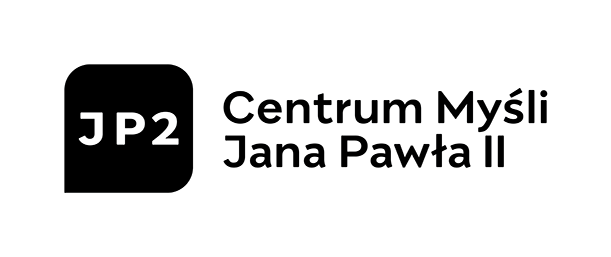

Project co-financed by: 

Patronage: 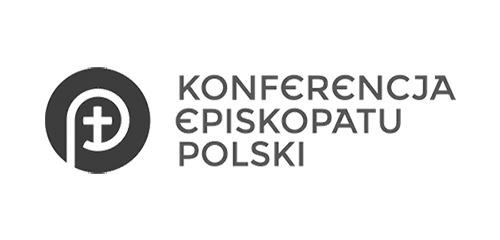

Partners: 